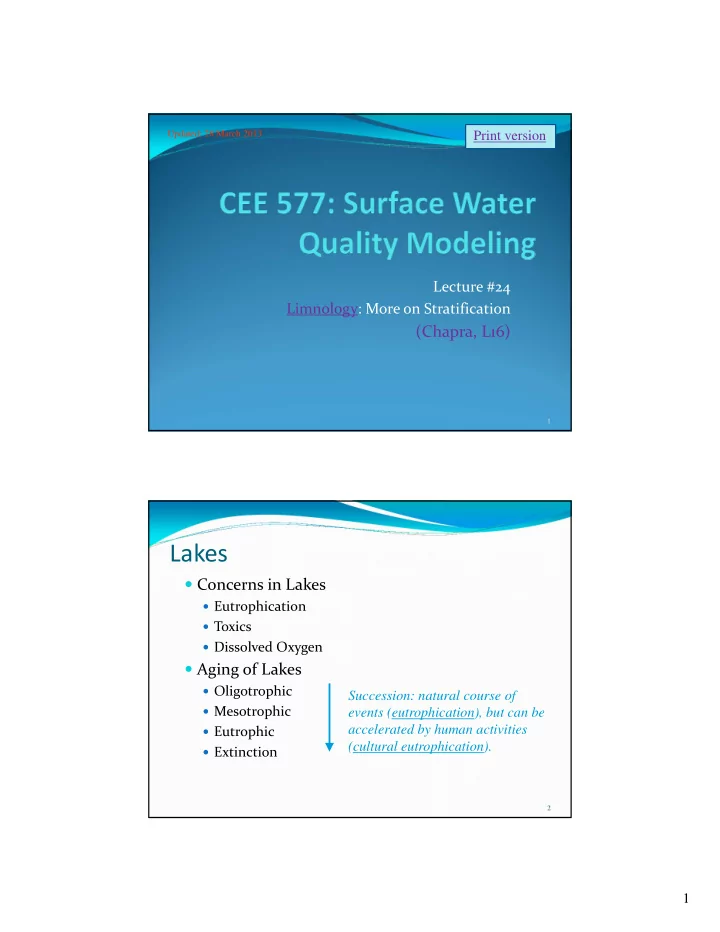

Updated: 28 March 2013 Print version Lecture #24 Limnology: More on Stratification (Chapra, L16) 1 Lakes Concerns in Lakes Eutrophication Toxics Dissolved Oxygen Aging of Lakes Oligotrophic Succession: natural course of Mesotrophic events (eutrophication), but can be accelerated by human activities Eutrophic (cultural eutrophication). Extinction 2 1
Lakes and Lake Modeling Epilimnion Thermocline Hypolimnion 3 Lakes and Lake Modeling (cont.) 4 2
WQ Profiles in Stratified Lakes Temperature Dissolved oxygen Epilimnion Thermocline Hypolimnion Manganese Concentration 5 Temp. Profiles in Stratified Lakes Fall Spring Winter Summer Epilimnion Thermocline Hypolimnion Temperature 6 3
From: http://www.ouc.bc.ca/fwsc/oklimnol/FIG1.JPG 7 Completely mixed lake model [accumulation] = [loadings] ± [transport] ± [reactions] W(t) Q V dc kVc n W t ( ) Qc dt For a 1st order reaction (n=1): V dc W t ( ) c dt V Q Where: k V W Steady State Solution: c Q kV 8 4
Stratified Lake Model Epilimnion 1 2 Hypolimnion V dc 1 ( ) W Qc E c c k V c 1 1 1 12 2 1 1 1 1 dt V dc 1 W E ( c c ) k V c 2 2 12 1 2 2 2 2 dt 9 Thermal Lake Types vs Latitude From Limnology, by Wetzel 10 5
Lake Types Amictic : lakes permanently covered with ice Cold Monomictic : temperature is always <4 o C, mixes only in summer, when T~4 o C Dimictic : circulates freely twice a year, temperature ranges above and below 4 o C Warm Monomictic : temperature is always >4 o C. Mixes only in winter Oligomictic : warm lakes (usually tropical) with rare and irregular mixing Polymictic : frequent or continuous circulation (possibly even diurnal) 11 To next lecture 12 6
Recommend
More recommend